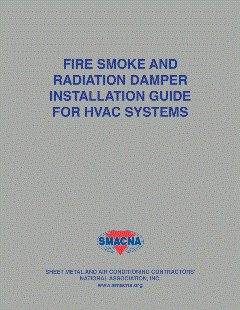Each October, the National Fire Protection Association (NFPA) sponsors Fire Prevention Week and this year (October 9-15) marks the 100th anniversary of this important program. The NFPA website Fire Prevention Week (nfpa.org) contains numerous resources for families regarding implementing a plan for fire prevention to the theme of “Fire Won’t Wait. Plan Your Escape.” This theme reinforces the critical importance of developing a home escape plan with all members of the household and practicing it regularly. In homes, active smoke detectors are one of the best ways to alert residents of a house fire. Please share this with your families and workers.
Fire prevention for companies is important for several reasons. Protecting workers from injuries resulting from fire and explosions is the number one motivation for preparing for these incidents. However, risk management principles also encourage companies to protect against losses including the valuable physical assets that could be damaged or lost from a fire or explosion and the losses associated with regulatory non-compliance. While numerous local, state and federal agencies promulgate and enforce fire safety related codes and standards, the two main national regulatory bodies dealing with fire protection and fire prevention are the NFPA and the Occupational Safety and Health Administration (OSHA).
With over 300 codes and standards, NFPA addresses general fire related issues through the Life Safety Code but also very specific processes and applications. The two NFPA standards I would recommend all contractors be familiar with is NFPA 101, the Life Safety Code; and NFPA 70E, Standard for Electrical Safety in the Workplace. The Life Safety Code deals with "those construction, protection, and occupancy features necessary to minimize danger to life from the effects of fire, including smoke, heat, and toxic gases created during a fire." It applies to new and existing buildings and renovations so altering a shop could bring into play NFPA 101 issues such as means of egress and chemical storage.
NFPA 70E is partner to the National Electric Code (NEC) but NFPA 70 focuses on the policies, procedures and program controls needed to protect workers from shock, electrocution, arc flash, and arc blast while performing electrical work. It is critical for contractors to implement a comprehensive electrical safety program including identifying the type of work and the workers performing that work to ensure NFPA 70E related processes and training is in place. While NFPA 70E is a “consensus standard”, it does have “prescriptive-based” requirements that OSHA looks to when enforcing their “performance-based” requirements.
Under OSHA, fire prevention and emergency response requirements can be found in numerous general industry (shops) and construction (sites / projects) standards. Sheet metal and HVAC companies that do both fabrication and construction should likely have separate plans for these varied workplaces since OSHA requirements for each are different. Rather than go into all the details for these standards, the following is a summary of where to find fire safety OSHA standards that pertain directly to sheet metal and HVAC work.
Note that these standard numbers are based on Federal OSHA standards and state plan numbers and requirements may differ. For shops, there are numerous General Industry standards concerning aspects of fire safety, including:
1910 Subpart E - Exit Routes and Emergency Planning
1910 Subpart G - Occupational Health and Environmental Control
1910 Subpart H - Hazardous Materials
1910 Subpart L - Fire Protection
1910 Subpart N - Materials Handling and Storage
1910 Subpart Q - Welding, Cutting and Brazing
1910 Subpart Z - Toxic and Hazardous Substances
For construction sites, the standard numbers include the following:
1926 Subpart C - General Safety and Health Provisions
1926 Subpart D – Ventilation and More
1926 Subpart F - Fire Protection and Prevention
1926 Subpart H - Materials Handling, Storage, Use, and Disposal
1926 Subpart J - Welding and Cutting
1926 Subpart K – Electrical
While written fire prevention and emergency response plans may not require all parts of these standards, it is prudent to ensure that the plans are comprehensive based on the work being conducted. For example, note that both sets of OSHA standards have requirements for welding (and cutting / brazing). Welding hazards are very common in the sheet metal and HVAC industry and contractors should ensure that workplace hazard assessments and written programs include all welding and “hot work” related work activity.
Related Resources:
NFPA 70E®: Standard for Electrical Safety in the Workplace®
Fire Safety - Overview | Occupational Safety and Health Administration (osha.gov)










